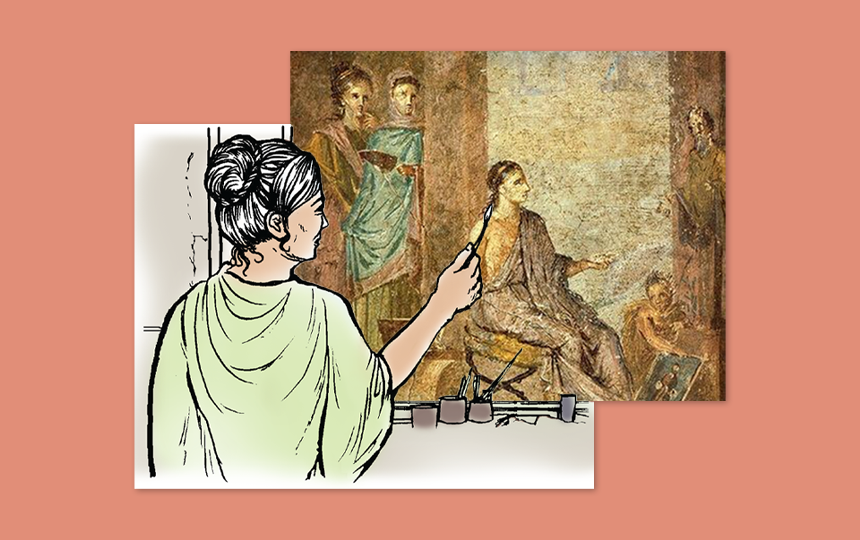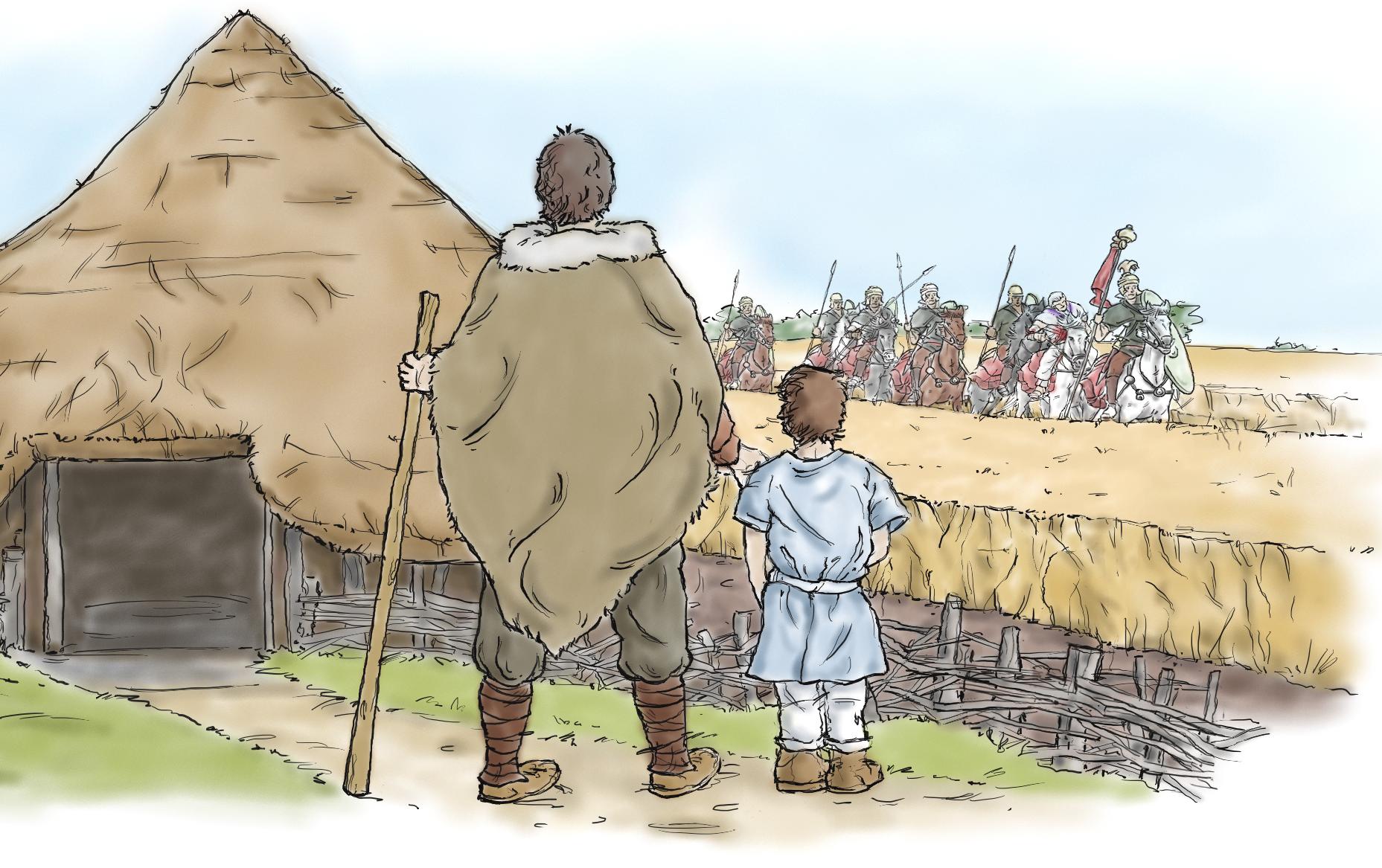The household of Caecilius has gained a daughter in the new UK and International edition of the Cambridge Latin Course. In this post, Director Caroline Bristow introduces Lucia and explores the surviving evidence for the lives of girls like her in the Roman world.

Submitted by Anonymous on Mon, 13/06/2022 - 10:47
A new illustration of Lucia for the UK and International fifth edition of the Cambridge Latin Course
While we know from surviving records that Caecilius had at least two sons, Quintus and Sextus, we know nothing else about the family. Back when the Cambridge Latin Course was first created, the authors invented the character of Metella but gave the family just one child, Quintus. A woman like Metella may have been pregnant ten or twelve times in a lifetime, but only some of her children would have survived to adulthood. Centering the story on such a large family would not have been sensible from a narrative perspective, but the authors of the North American 5th edition decided to give the family one extra child, a daughter Lucia. The new UK and International edition adopts the character of Lucia while making changes to her storyline in response to feedback from our North American community.
Roman girls were traditionally given a nomen based on their father’s clan. Metella’s name, for example, indicates that she was born into the Metelli. We first see women being given a second name (cognomen) in sources from the first century BC, and by the first century AD cognomina for women had become common. A typical pattern for an Imperial Roman woman's name is therefore a nomen followed by a cognomen, for example Claudia Severa. It is likely that Caecilius’ daughter would have been called Caecilia, but using such similar names for father and daughter was likely to present beginner Latin students with too many challenges. We have imagined instead that she and her family preferred to call her Lucia, after her father’s first name, Lucius.
The character of Lucia is a feasible representation of girl of middling social status growing up in a small but prosperous town in the first century AD. As a young and unmarried teenager, she still lives in Caecilius’ household. Although some arranged marriages took place when girls were in their early teens, a study by Brent Shaw (1987) considered the ages at which funerary inscriptions to females were dedicated by husbands rather than by parents, and concluded that ordinary Roman girls in Western, urban centres were married later than is usually suggested in elite literature. Often, they had reached their late teens or even, according to the census information from Roman Egypt, their early twenties. It is likely that Caecilius and Metella would have been thinking about Lucia’s marriage and the potential opportunities it might bring. In the story Lūcia et Metella, Metella informs her horrified daughter that her father is considering a lucrative match between her and a rich, well-connected older man. Prior to this, the reader has learnt that Lucia herself prefers Quintus’ friend Alexander, a fact her mother casually dismisses. This story and the preceding narrative allow for exploration of the role of marriage in a Roman girl’s life, and the role of the girl herself in choices about it.
Although Roman society would not have allowed Lucia the opportunities of a modern teenager, she is depicted as an intelligent young woman with an historically plausible interest in the world around her. Many girls from wealthier backgrounds were educated to a basic standard by private tutors, and some attended schools (Martial, Epigram 9.68 1-2). Some elite women were self-taught (Seneca, Consolation to Helvia 17.3-5). The Stoic philosopher Musonius Rufus famously argued that girls had the same intellectual capacities as boys and should receive a similar education, although his goal was more conservative than it might first appear: to make such girls skillful wives, household managers and mothers (Lectures 4 and 5). Evidence also shows that some women were enthusiastic readers (for example: Pliny, Letter 5.16; Plutarch on Cornelia, Life of Pompey). When we first meet Lucia, she is reading in the garden and we learn that she particularly likes tales of adventure, especially the legends of Hercules. Metella is actively involved in her daughter’s education and upbringing, something which was praised according to texts such as Juvenal’s Satire 14 and Pliny’s Letter 4.19.
While she does not have as much freedom as her brother, Lucia still takes an active interest in the life of Pompeii. Indeed, she is engaged in Pompeian politics to the extent that she and Quintus quarrel about the rival electoral candidates. Her interest in politics is supported by the fact that around 7% of the political slogans found on the walls of Pompeii were sponsored or co-sponsored by women. When Lucia acts as the 'talking head' who explains Pompeian politics to students in Stage 11, she points out some examples of these slogans to them too.
References and Resources
- Shaw, Brent (1987), 'The Age of Roman Girls at Marriage: Some Reconsiderations' in The Journal of Roman Studies vol. 77, pp. 30-46.
Cambridge School Classics Project








